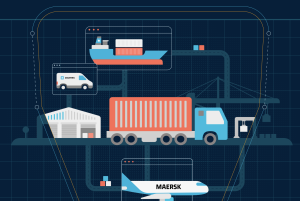 By Jeff Stiles, VP, Product Marketing SCM, Oracle
By Jeff Stiles, VP, Product Marketing SCM, Oracle
Where are supply chains going today? I had a chance to hear some interesting perspectives on this question at a recent Oracle Live event, where I attended a session that looked at pivoting your SCM operations to growth. In light of recent events, this was a timely discussion, to say the least.
At the risk of stating the obvious, the last six months have been a trying and challenging time for everybody, and especially product companies – those organizations that run supply chains and manufacturing plants. The crisis has been a sea change for them, and they find themselves now at a crossroads.
These days conversations have changed – not only around the dinner table but inside of corporate board rooms. We see newfound respect for supply chains and the people and systems that support them. I think it’s safe to say that probably 99% of people around the world now know the word “supply chain”.
In reality, supply chains have been under pressure for some time. Years ago, companies used to build their supply chains to fit a global economy that was predictable, sustainable, and stable. But those conditions no longer exist – and it’s not just due to the pandemic. Geopolitical and market forces have also been at work, steadily eroding the foundations of the old predictable order.
Global realignments
Amid these global realignments, stability and predictability has been replaced by fragility. Trade barriers, tariffs, and taxes have now come back into play, adding uncertainty to cost and logistics calculations. Transportation costs, which had been falling reliably in recent years, are now flatlining. Meanwhile, markets are moving toward what’s been termed “servitization” – that’s where companies no longer just sell products, but products and services bundled together, generating not only higher margins but also closer and more advantageous relationships with customers.
We are now at a time when the supply chain needs to evolve. And we don’t mean just cosmetic surgery, but radical change. If the old normal was about designing supply chains for maximum efficiency and low cost, the new normal is about building supply chains that are resilient, automated, and flexible. Companies are embracing a multidimensional value framework that puts equal weight on factors like supply alternatives, risk exposure, tariff and tax exposure, and channel complexity.
You could say that when it comes to supply chains, speed and agility have become the new “low cost.” It means that more and more companies should look at producing at the point of consumption, doing better demand forecasting, and innovating faster. Sustainability? That’s now a given.
Even before the pandemic, innovative competitors were busy disrupting markets. And the period we’re going through now is yet another chance for disrupters to upend your established markets, wielding game-changing technologies like IoT, analytics, and machine learning. The question now is: How quickly you can uptake these new technologies into your systems to stay competitive?
Out with the old
We are now witnessing a big shift in the old formula of “make in the East and sell in West.” The new mantra is: “Make where you sell and supply where you make.” Among other things, that calls for building more plants in local regions.
How do you compete and thrive in this new environment that puts a premium on agility and flexibility? In our view, the only way is to adopt a constantly modernizing supply chain solution delivered via the cloud. Perhaps the biggest reason for doing this is to avoid the technical debt that is inevitable with on-prem systems.
And that debt can be considerable. It’s estimated that 75-80% of the cost of on-prem systems is maintenance. This includes the constant integrations, hardware refreshes, and forklift upgrades every 3-5 years – just to keep lights on.
And it’s about more than freeing up capital. Moving to the cloud liberates staff to become business enablers and partners who can help drive meaningful change and move the business forward, not just pay down technical debt. This is why more than half of our 2,800 supply chain customers have moved from on-prem systems to Oracle SCM Cloud, and many more are on the way.
These companies now have the flexibility to outpace change in markets, products, and business models. They leverage a single unified data model to break down silos and enable end-to-end process flows between every part of the business. Innovation is built into the platform with access to evolving new technologies like IoT, machine learning, bots, and AI-driven digital planning advisors. And companies stay current with all of these capabilities through quarterly updates in the cloud, future-proofing organizations against change.
These capabilities keep expanding as Oracle continues to introduce new SCM products and features, from project-based planning and backlog management (super-relevant these days) to purpose-built IoT logistics apps, integrated geofencing technologies, connected wearables, and much more. It’s hardly surprising that Gartner, in its latest review cloud ERP for product-centric enterprises, put Oracle in the leader quadrant – the only company earning that position.
It’s been said that a crisis can be a catalyst for change. If you ever needed a reason to move to the cloud, the events of the last six months have given you one. Why wait? The time to move is now.


























